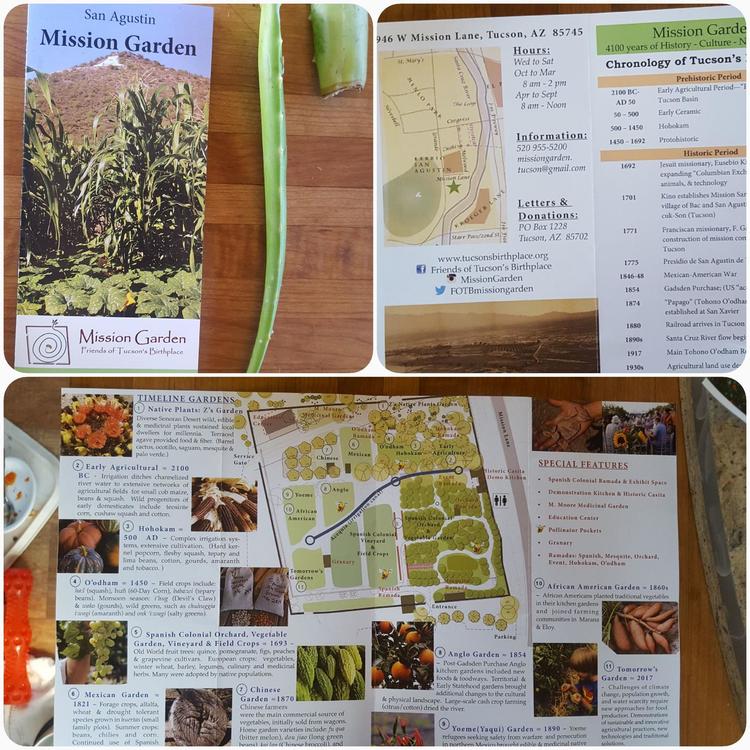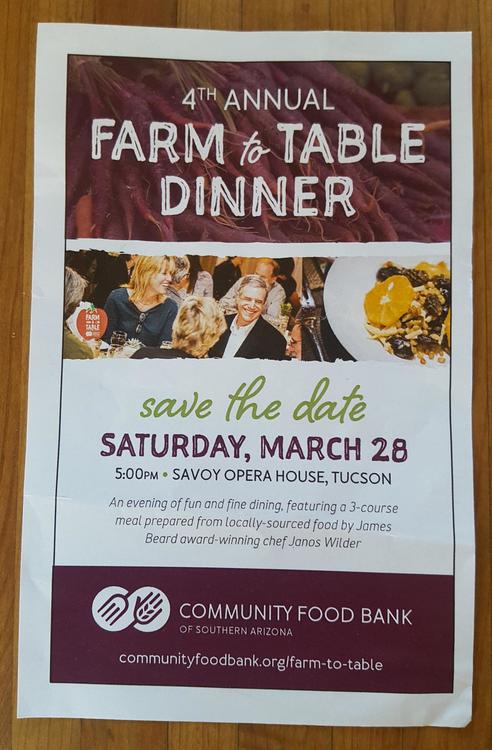The ethnobotanists and food organizations were more in evidence this time than last year, although a few were familiar to me from before. I think the festival map was better marked too, to show where each could be found.
Iskashitaa Refugee Network is, to quote from their website,
QuoteIskashitaa Refugee Network (IRN) is an intergenerational network of Tucson volunteers and UN refugees from Africa, Asia and the Middle East, who locate, harvest, and re-distribute locally grown fruits and vegetables which would otherwise go to waste.
I like the social purpose. I also like the fact that they harvest / glean local food that would otherwise go to waste. If you travel around the southwestern communities like Tucson, Phoenix, and nearly anywhere in the L.A. Basin, you'll find that there are backyard trees planted by an earlier generation and no longer loved. There are abandoned farmsteads with growing crops. There are, of course, the native plants that flourish and provide food if you know what to do with it. Iskashitaa works in the Tucson area to get that food to people who need it. I have already noted that we came loaded with ridiculous amounts of food from home that somehow never got cooked over the summer. We don't need to be buying more; in fact, our shopping has been curtailed to date because of that. Nonetheless I bought these from Iskashitaa. My sister is coming to visit at Christmas, and I look forward to trying the prickly pear/calamondin marmalade with her. She may also like the green tomato relish.
The San Xavier Co-op Farm is owned and operated by a local group of Tohono O'odham. I first heard of them because of their growing Sonoran White Wheat and other heritage grains that are used by Barrio Bread, a beloved bakery in Tucson that I didn't manage to visit this trip. Now I have information about the farm itself: where it's located, when it can be visited. They had a table full of items that I couldn't justify buying: mesquite flours, Sonoran white wheat flours, prickly pear syrups, some other items. Aha! They also had saguaro seeds. I tasted some. Nice crunch. They'll go well on rolls, like poppy seeds.
I asked the young woman at the table whether she goes out for the saguaro harvest. "Oh yes," she said. Didn't she just about collapse in the heat? I asked. She smiled. "Yes, it's hot -- but we go out, because that's when the magic happens." I wanted to ask whether she meant magic in the figurative or literal sense, but couldn't think of a way to ask without sounding like a dumb insensitive houle/gringa/whatever the term would be to a local Native American. So I made my purchase, thanked her and moved on to the next table. The Farm is on my list of places to visit next time around. Maybe I can learn more then. Maybe somebody here knows.
The other place I've wanted to find and visit is the Mission Garden, known as the birthplace of Tucson. The Arizona Sonora Desert Museum works with them and there's an ethnobotany display in part of the ASDM grounds. I've read enough to know that the Mission Garden works to find and revive the old heritage crops: the oldest pomegranates they have found are propagated at the gardens, and it's a strain from the original mission. Same thing goes for figs, and so on. I now know that the garden is organized according to settlement eras. It should be an interesting place to visit. The representatives and their table were on one of the rambling paths and I was happy to find them. "At last!" I said, "I've been reading about you for 2 years! Now I can get some information!" I came away with no pictures of their table (what was I thinking) but with viable native chile and onion seeds, and on my way out they also insisted I take some aloe vera cuttings. There was lively discussion about what to do with it. "Keep it in your kitchen to rub on your wounds when you make a boo-boo!" "Stick them in a pot of soil, and they'll grow!" Some said it's best to plant it right away, and others said that the traditional method was to wait a few days first. By default I'm in the latter camp.
The final nonprofit organization that I noticed was the Community Food Bank. Maybe we'll be back in time for their Farm to Table Dinner. Maybe one of you readers will find this flyer valuable.







